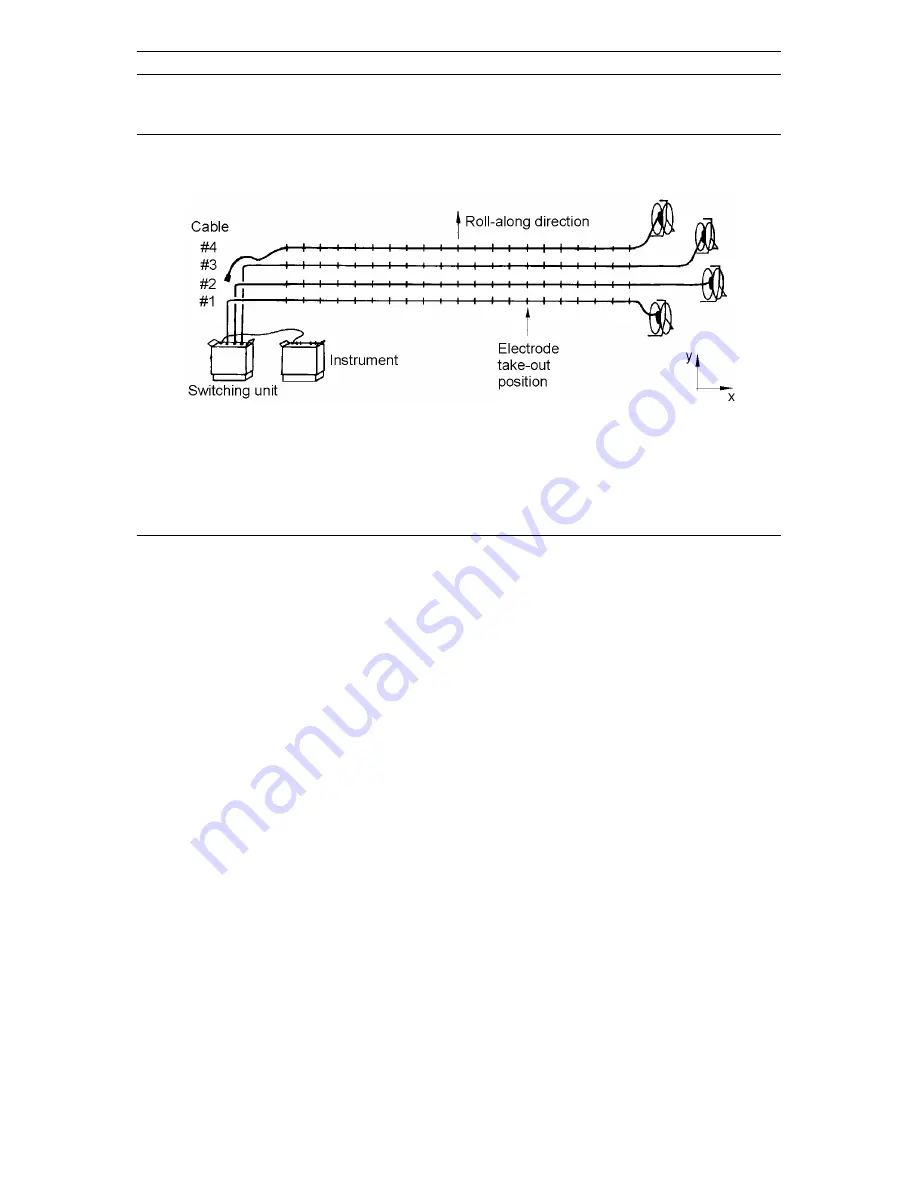
ABEM Terrameter SAS 1000 / SAS 4000
- 43 -
6.2.9
Area Cover / 3D Roll-along
For applications where area coverage is needed it may be desirable to do roll-along in a
direction perpendicular to the extension of the cables, as shown in Figure 15.
6.2.10
3D Resistivity Surveying by Means of a Number of 2D Layouts
A simple way of carrying out a 3D survey is to measure a number of parallel, and optionally
orthogonal, 2D sections, and afterwards merge the 2D data sets into a 3D data set before
inverting the data. A condensed step-by-step description is given below, in which it is
assumed that the (first) electrode cable layout direction is called X and the perpendicular
direction is called Y (Figure 16). The description assumes that Res3dinv is to be used for the
inversion, but the procedure should also be applicable to alternative inversion software.
1.
Decide the number or electrodes in the cable layout direction (X-direction). This will be
limited by the number of take-outs on the electrode cables available, and could be for
example 16, 21, 32 or 41 electrodes.
2.
Decide which electrode configuration to use. Pole-dipole (both forward and reverse
measurements) is often preferred as it offers good depth penetration and sensitivity
towards the edges on limited cable layouts, plus good resolution. Dipole-dipole or
multiple gradient array measurements are good options if it is not practical to use a remote
electrode.
3.
Select suitable protocol files and ensure that these are available to the Lund data
acquisition software in the Terrameter (if necessary compile a PROTOCOL.BIN file and
upload to the instrument).
4.
Roll out the electrode cable(s) along the first investigation line and connect the electrodes.
Connect the electrode cable(s) to the Electrode Selector and start measuring to a “New”
data file using the selected protocol file(s).
Figure 15. Sketch system layout for roll-along surveying, with a roll-along direction
perpendicular to the cable direction. The roll-along direction will depend on
coordinate system orientation preferences.
















































